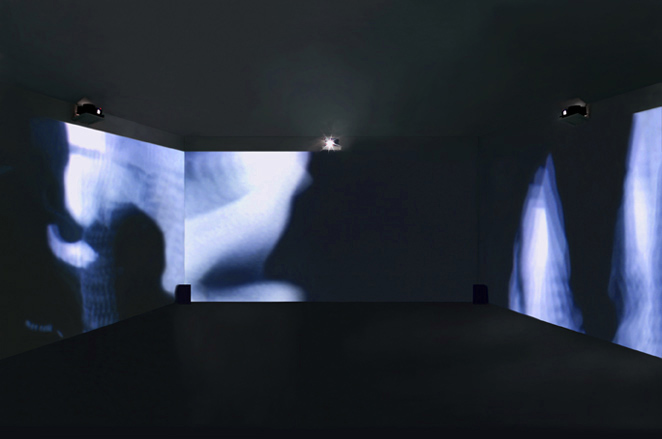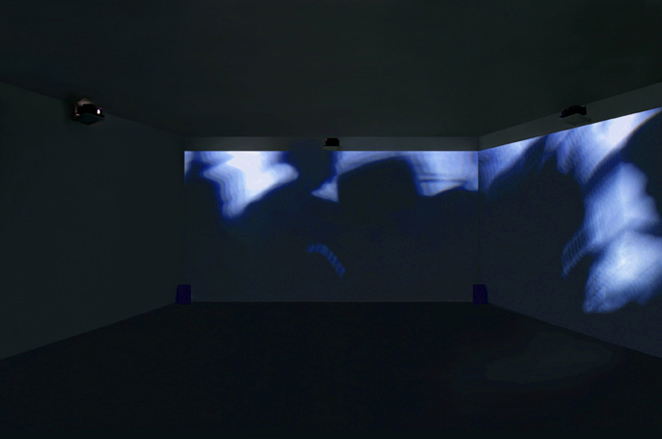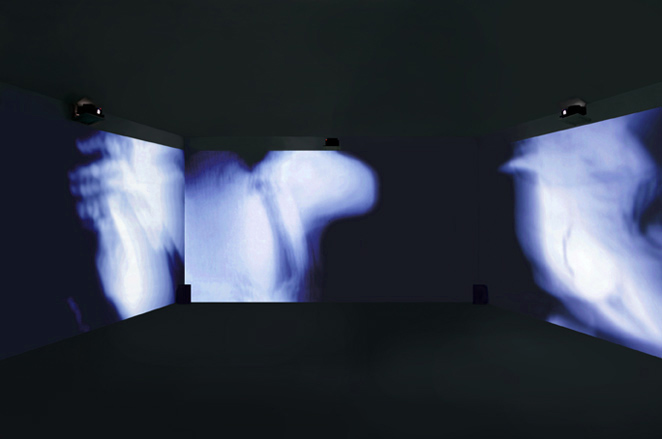Info
– 4 carousel slide projectors each with 52 slides
– 4 sensor-controlled timers
– 4 contact microphones
– mixer
– amplifier
– 4 loudspeakers
room here: L x W x H = 7.00 x 8.00 x 4.50 m
One projector is mounted on each wall so that pictures are projected to cover the opposite wall.
The photos are details taken from running TV films.
At the moment of exposure the camera shows the screen surface in sharp focus. The difference in speed between the pictures on the television screen and the shutter speed of the camera makes the photos blurry, revealing that there is movement on the television screen.
The piece controls itself:
The slides change independently of one another—depending on the brightness produced by a given slide as projected:
– the darker it is, the longer a slide is projected,
– the lighter, the more rapidly the next slide appears.
Sequences result in which all projectors simultaneously project slides and the room is light, only some of them project or none at all so that the room is dark.
The mechanical clicking sound of the projectors is electronically amplified and broadcast by the loudspeakers.
The continuous change in light intensity in the room continuously alters the speed at which the slides are changed by each projector individually and, consequently, the rhythm of the clicking sound.
|
|



